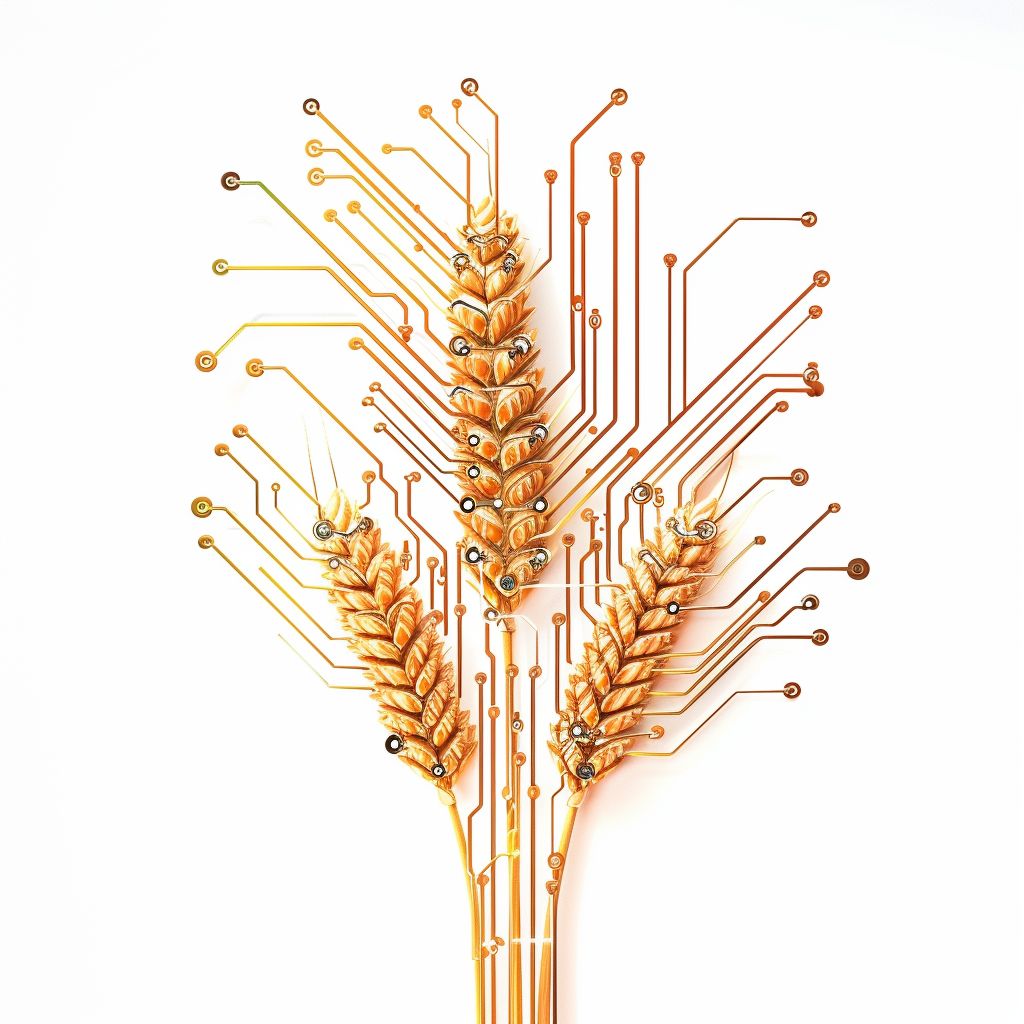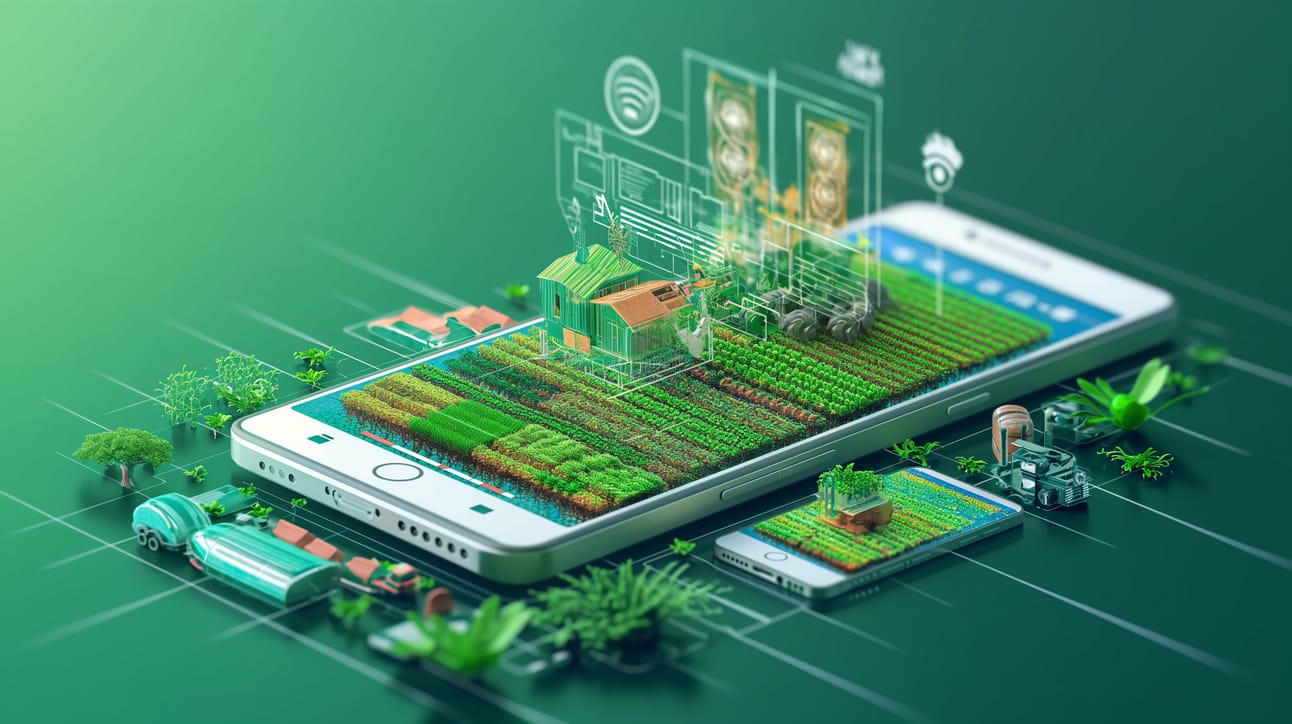- Seed Chronicles: Bridging Hemispheres
- Posts
- Predicting Resilience
Predicting Resilience
AI-Powered Tools for Matching Germplasm to Future Climates

Setting the scene
Our changing climate poses an unprecedented threat to global food security. More extreme weather, rising temperatures, and shifting rainfall patterns stress our most important food crops like never before. But advances in artificial intelligence (AI) are providing new hope, with high-tech tools rapidly accelerating the development of climate-resilient “super crops”. This article explores the science behind these futuristic breeding techniques, their real-world applications, and how AI empowers researchers in the race against climate change.
The Looming Threat: Climate Change and Food Security
By 2050, experts warn that major staple crop yields could fall dramatically due to climate change impacts. One dire scenario estimates global wheat harvests plummeting 20% in just a decade due to relentless heat waves and unpredictable rainfall. This collapse of a cornerstone crop would leave millions facing escalating hunger (Challinor et al., 2014).
While not inevitable, this projection highlights the existential threat climate change poses to food systems worldwide. Traditional breeding methods have delivered incredible yield gains over decades, but the complexity of adapting our crops to rapid climate shifts demands new approaches. Powerful AI technologies have emerged as essential tools to accelerate the development of climate-resilient crops.
AI to the Rescue: Predicting Crop Resilience
Hidden within vast collections of plant genetic resources lies an untapped treasure trove of resilience traits. These genes hold the key to withstanding pests, diseases, heat, drought, and other climate shocks. But finding those genes is like locating tiny needles in a haystack the size of a small city. AI and its formidable data processing capabilities are uniquely suited to this challenge.
Sophisticated machine learning models can rapidly analyze massive datasets from field trials, plant genomes, and climate records. They identify patterns and correlations too subtle or complex for humans to discern (Tanger et al., 2017). These insights allow scientists to pinpoint the most promising genes and trait combinations for breeding climate-ready crops.
For example, Usugbe et al. (2023) developed an AI tool that predicts crop yields across Africa for key staples like maize, rice, and wheat. It taps real-time satellite data and machine learning to provide location-specific forecasts at an unprecedented scale. Such AI systems will be crucial for monitoring food security in a changing climate.

Simulating the Future: Virtual Crop Testing with AI
In addition to planting real crops in test fields, researchers use complex computer models to simulate crop growth. Just like in video games, these virtual environments allow “experiments” too costly or difficult in the real world. Scientists input many variants of a crop with different traits into the model, crank up the heat and drought, and observe which thrives.
The challenge lies in setting up these simulations accurately, requiring extensive calibration. Here too, AI lends a hand. Algorithms can rapidly refine the model parameters to match real-world data. AI also analyzes model behavior under extreme scenarios outside historic norms, previewing how crops might respond to future climate conditions (Ramirez-Villegas et al., 2017).
Feeding the AI Engine: Building Comprehensive Datasets
However, even the most advanced AI is useless without sufficient data to analyze. Scientists are assembling massive databases with diverse types of information to drive climate resilience predictions:
High-throughput field phenotyping: Drones and sensors to collect phenotypic data on growth, yield, and stress responses for countless crop variants across environments (Araus et al., 2021).
Genomic sequencing: Rapidly decoding DNA of wild crop relatives and traditional varieties to uncover advantageous genes (Kole et al., 2015).
Climate projections: Simulating future temperature, rainfall, and extreme event scenarios for all major growing regions (Ramirez-Villegas et al., 2013).
Agronomic and soil data: Critical insights on real farm conditions where resilience matters most (Juliana et al., 2019).
International initiatives like CGIAR’s Big Data Platform provide researchers open access to vital consolidated datasets for the common good.
Real-World Impact: Case Studies in Crop Improvement
While crop AI systems are still evolving, real-world examples demonstrate their utility for accelerating breeding under climate change:
In cassava, a climate-resilient variety developed with genomic selection yielded over 50% more than a popular farmer variety in Colombian field trials during a severe drought (Ramirez-Villegas et al., 2017).
Scientists used AI-assisted imaging to rapidly classify wheat types by drought response, accelerating identification of resilient varieties (Ghosal et al., 2018).
AI simulation models that predict maize traits like flowering time can guide breeders to smarter crosses and shave years off development of new varieties (Technow et al., 2020).
These examples offer just a glimpse of AI’s vast promise to enhance food security amid climate change.
Growing Pains: Challenges to Address
Maximizing benefits while mitigating risks is crucial as AI expands in agriculture. Key challenges include:
Representation gaps: Many AI tools target major staple crops, neglecting regionally important yet understudied crops
The "black box" problem: AI explainability is limited, making it difficult to extract biological insights (Thalpage et al., 2023).
Access inequities: Developing nations lack datasets and computing infrastructure to utilize AI.
Participatory gaps: Farmers are often left out of tool development, risking low adoption (Rose & Chilvers, 2018).
Researchers are already pursuing solutions, including initiatives to improve data collection on neglected crops, tools to increase algorithm transparency, and collaborative platforms to democratize AI.
The Road Ahead: Cautious Optimism for a Climate-Smart Future
Climate change has created an urgent imperative for rapid crop adaptation. While risks remain, AI and machine learning will be integral to our toolbox. These advanced technologies offer invaluable support to accelerate resilience gene discovery and supercharge breeding programs.
But AI is just one piece of the puzzle. Progress depends on sustained investment, data accessibility, participatory research, and a commitment to equitable development. If pursued diligently and ethically, AI-enabled breeding techniques offer profound hope for nourishing the world in an uncertain future. The path won’t be easy, but humanity’s capacity for insight and invention has always risen to overcome existential threats, from the earliest crop domestication to the Green Revolution. With the power of AI, the future of food just may be brighter than we think.

References
Challinor, A., Watson, J., Lobell, D. et al. A meta-analysis of crop yield under climate change and adaptation. Nature Clim Change 4, 287–291 (2014). https://doi.org/10.1038/nclimate2153
Ghosal, S., Blystone, D., Singh, A. K., Ganapathysubramanian, B., Singh, A., & Sarkar, S. (2018). An explainable deep machine vision framework for plant stress phenotyping. Proceedings of the National Academy of Sciences, 115(18), 4613-4618.
José L Araus, Ruth Sanchez-Bragado, Rubén Vicente, Improving crop yield and resilience through optimization of photosynthesis: panacea or pipe dream?, Journal of Experimental Botany, Volume 72, Issue 11, 18 May 2021, Pages 3936–3955, https://doi.org/10.1093/jxb/erab097
Julian Ramirez-Villegas, Ann-Kristin Koehler, Andrew J. Challinor. (2027). Assessing uncertainty and complexity in regional-scale crop model simulations. European Journal of Agronomy. Volume 88. Pages 84-95,ISSN 1161-0301, https://doi.org/10.1016/j.eja.2015.11.021 . (https://www.sciencedirect.com/science/article/pii/S1161030115300666 )
Juliana, P., Poland, J., Huerta-Espino, J. et al. Improving grain yield, stress resilience and quality of bread wheat using large-scale genomics. Nat Genet 51, 1530–1539 (2019). https://doi.org/10.1038/s41588-019-0496-6
Kole C, Muthamilarasan M, Henry R, Edwards D, Sharma R, Abberton M, Batley J, Bentley A, Blakeney M, Bryant J, Cai H, Cakir M, Cseke LJ, Cockram J, de Oliveira AC, De Pace C, Dempewolf H, Ellison S, Gepts P, Greenland A, Hall A, Hori K, Hughes S, Humphreys MW, Iorizzo M, Ismail AM, Marshall A, Mayes S, Nguyen HT, Ogbonnaya FC, Ortiz R, Paterson AH, Simon PW, Tohme J, Tuberosa R, Valliyodan B, Varshney RK, Wullschleger SD, Yano M and Prasad M (2015) Application of genomics-assisted breeding for generation of climate resilient crops: progress and prospects. Front. Plant Sci. 6:563. doi: 10.3389/fpls.2015.00563
Rose, D. C., & Chilvers, J. (2018). Agriculture 4.0: Broadening responsible innovation in an era of smart farming. Frontiers in Sustainable Food Systems, 2, 87.
Tanger P, Klassen S, Mojica JP, Lovell JT, Moyers BT, Baraoidan M, Naredo ME, McNally KL, Poland J, Bush DR, Leung H, Leach JE, McKay JK. Field-based high throughput phenotyping rapidly identifies genomic regions controlling yield components in rice. Sci Rep. 2017 Feb 21;7:42839. doi: 10.1038/srep42839 . PMID: 28220807; PMCID: PMC5318881.
Technow, F., Podlich, D., & Cooper, M. (2020). Back to the future: Implications of genetic complexity for hybrid breeding strategies. BioRxiv, 2020-10.
Thalpage, N. S., & Nisansala, T. A. D. (2023). Exploring the Opportunities of Applying Digital Twins for Intrusion Detection in Industrial Control Systems of Production and Manufacturing–A Systematic Review. Data Protection in a Post-Pandemic Society, 113-143.
Usigbe, M.J., Asem-Hiablie, S., Uyeh, D.D. et al. Enhancing resilience in agricultural production systems with AI-based technologies. Environ Dev Sustain (2023). https://doi.org/10.1007/s10668-023-03588-0 )